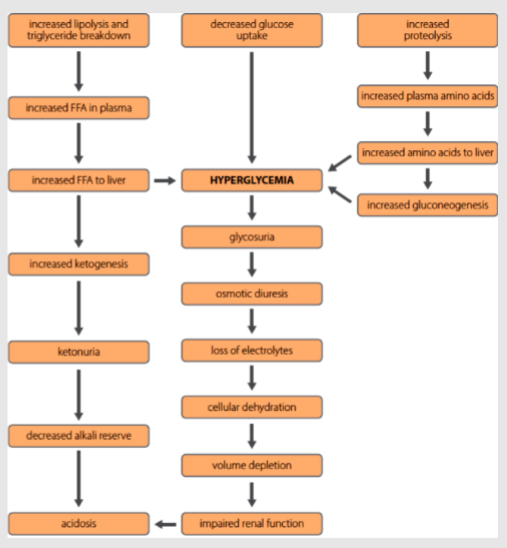Explain the significance of plasma glucose concentration for physiological function. (4)
☘Plasma glucose concentration is typically maintained at around 5 mmol/L in the body.
☘Glucose serves as a primary energy source for various tissues, especially the brain, which relies heavily on glucose metabolism for energy.
☘Hypoglycaemia, or low blood sugar (<2.5 mmol/L), can lead to severe consequences, including coma and death, as it deprives the brain of its essential energy substrate.
☘Conversely, chronic exposure to high glucose concentrations, known as hyperglycaemia, can result in protein damage through non-enzymatic glycation reactions, contributing to various health complications over time.
Calculate the total amount of glucose in the body for a 70kg male and 54kg female, and estimate how long it would last based on metabolic rates of the brain and skeletal muscle. (4)
☘For a 70 kg male with 14 L of extracellular water (ECF) and a glucose concentration of 5 mmol/L, the total glucose is 70 mmol.
☘For a 54 kg female with 9 L of extracellular water (ECF) and a glucose concentration of 5 mmol/L, the total glucose is 45 mmol.
☘Considering metabolic rates, the brain consumes approximately 30 mmol/hr, while skeletal muscle utilizes about 300 mmol/hr.
☘With these rates, the glucose supply would last approximately 2-3 hours for the brain and 0.2-0.3 hours for skeletal muscle.
Identify the two sources of plasma glucose and explain how hormones regulate plasma glucose levels. (3)
☘Two sources of plasma glucose are diet and organs capable of exporting glucose into the circulation.
☘Diet can contribute up to 3000 mmol/day of glucose.
☘Hormones regulate the integration of carbohydrate, fat, and protein metabolism to maintain constant plasma glucose levels, preventing surges after meals and plummeting between meals.
Describe the two phases of metabolism and the role of hormones in regulating them. (4)
☘The absorptive phase involves the storage of nutrients, while the post-absorptive phase involves the release of nutrients.
☘Hormones play a crucial role in regulating metabolic pathways during these phases.
☘Insulin promotes storage and decreases plasma glucose levels.
☘Counter-regulatory hormones such as glucagon, adrenaline (epinephrine), cortisol, and growth hormone promote nutrient release and raise plasma glucose levels.
List metabolic pathways serving energy storage. (3)
☘Glycogenesis: Synthesis of glycogen from glucose.
☘Lipogenesis: Synthesis of fatty acids from acetyl CoA.
☘Triglyceride synthesis: Esterification of fatty acids for storage as triglycerides.
List metabolic pathways serving energy release. (5)
☘Glycogenolysis: Release of glucose from glycogen stores.
☘Gluconeogenesis: De novo synthesis of glucose from non-carbohydrate substrates, principally amino acids.
☘Lipolysis: Release of free fatty acids from triglyceride breakdown.
☘Beta-oxidation: Conversion of fatty acids to acetyl CoA.
☘Ketogenesis: Production of ketone bodies from acetyl CoA.
List major inhibitory effects of insulin. (3)
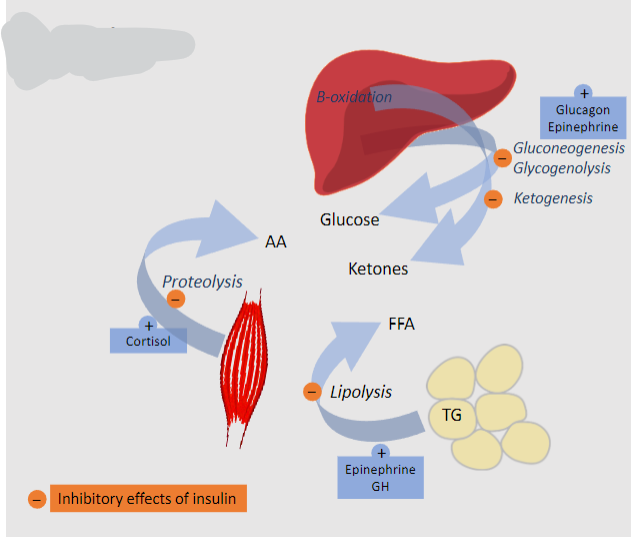
☘Inhibits release of glucose from the liver (hepatic glucose production).
☘Inhibits fat breakdown (lipolysis).
☘Inhibits protein breakdown (proteolysis).
List major stimulatory effects of insulin. (3)
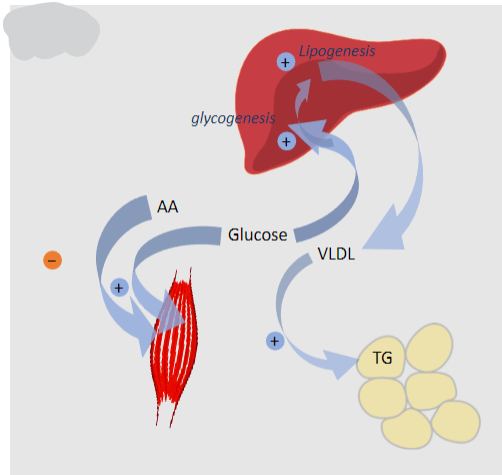
☘Stimulates liver glycogenesis.
☘Stimulates liver lipogenesis.
☘Promotes glucose uptake in muscle and adipose tissue.
List the short-term defences against hypoglycemia. (2)
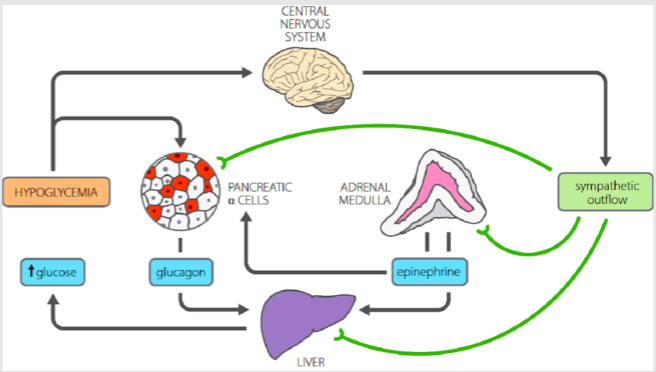
☘Increase hepatic glucose output (glucagon, epinephrine/adrenaline, sympathetic nervous system).
☘Activation of counter-regulatory hormones.
Picture demonstrating flexible uses of glucose in the TCA cycle:
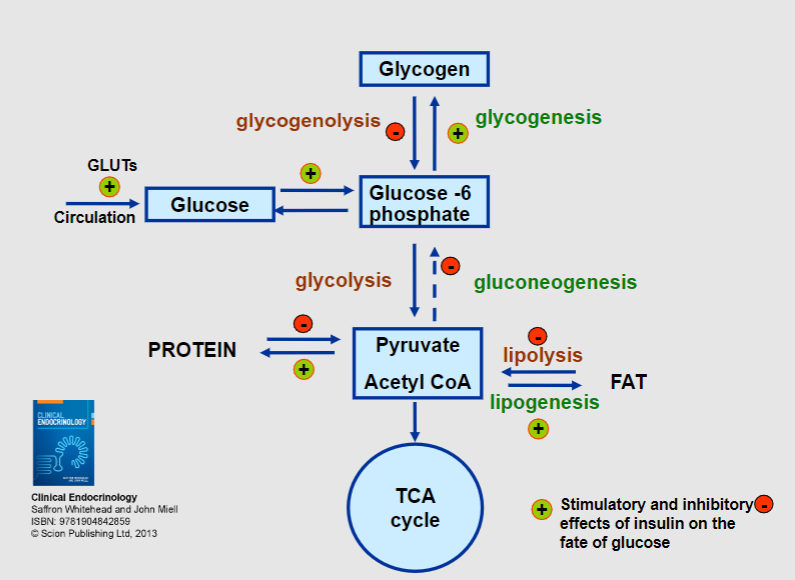
Picture demonstrating the major metabolic pathways in adipose tissue:
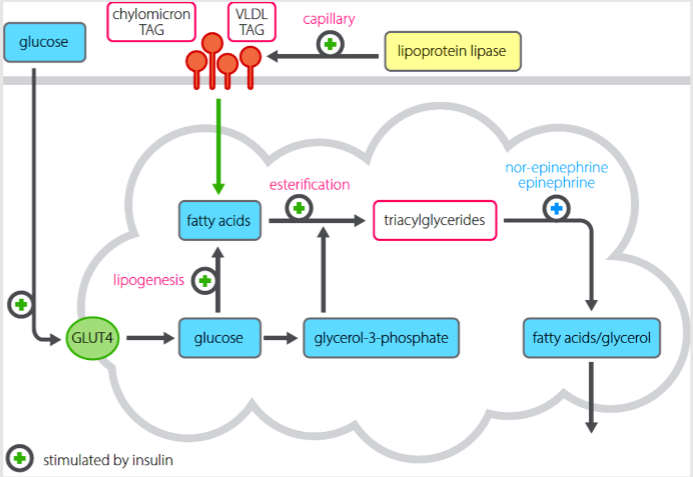
Picture demonstrating the major metabolic pathways in muscle
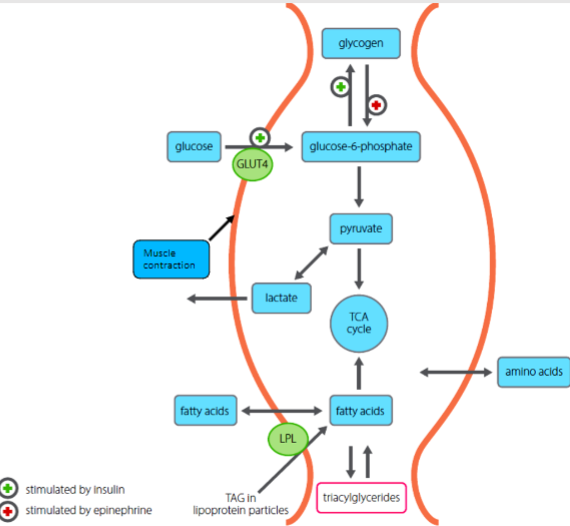
Picture demonstrating Glucose andamino acid metabolism in the liver amino acids
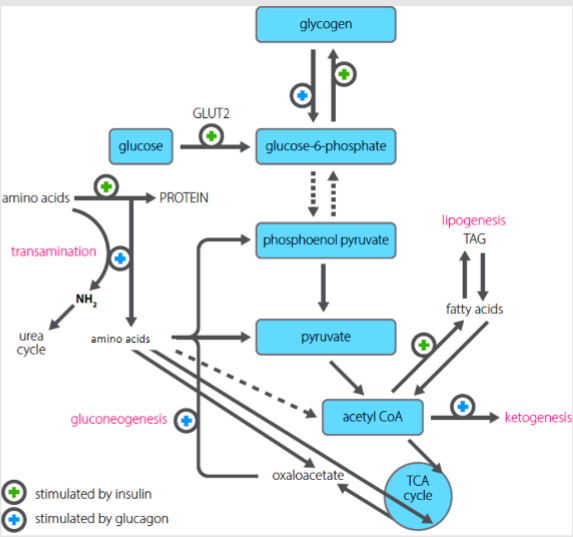
Picture demonstrating fatty acid metabolism in the liver
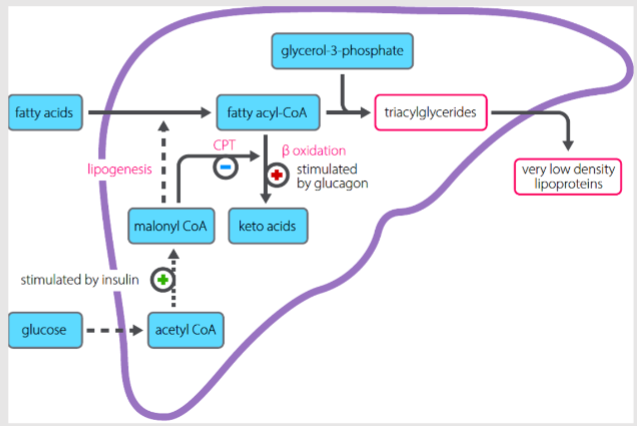
Picture demonstrating diabetic keto-acidosis:
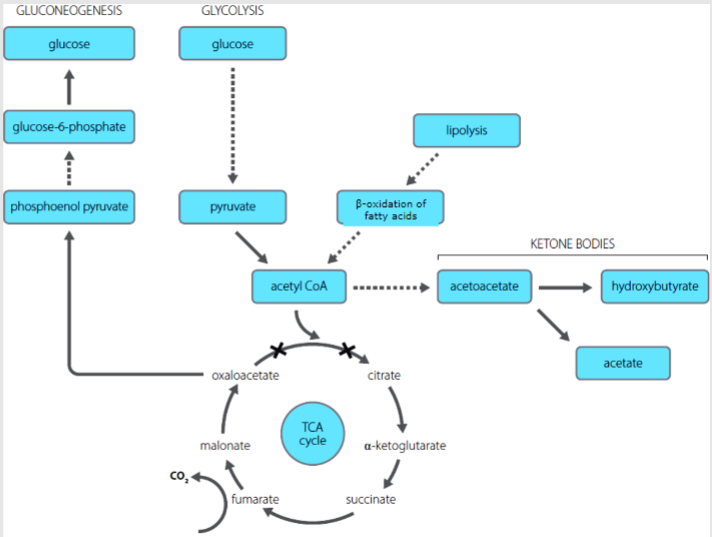
Picture demonstrating an overview of the metabolic disturbances in diabetic ketoacidosis:
